Rice whitefly is a dangerous pest, seriously affecting rice yield and quality. Learn how to effectively prevent it today!
Powdery Mildew Damages Rice
The white-backed planthopper is a severe pest that farmers face in rice cultivation. It not only reduces yields but also affects rice quality and the plant's overall growth. This article provides detailed information on the characteristics, damage, causes, and effective control measures for white-backed planthoppers from both expert and farmer perspectives.
1. What is the White-Backed Planthopper?
The white-backed planthopper is a common and serious pest that affects rice crops. These pests are small, measuring 1.5–2 mm, with two white wings, short antennae, and a body covered with a fine waxy coating, making them difficult to detect. After molting, their wings are initially transparent but become coated with a white powder within a few hours, giving them their distinctive appearance.
The biological characteristics of the white-backed planthopper include a life cycle of 17–24 days, divided into three stages: egg, nymph, and adult. They undergo incomplete metamorphosis, skipping the pupal stage. The nymphs progress through four instars, with the fourth instar often referred to as a pseudo-pupa.
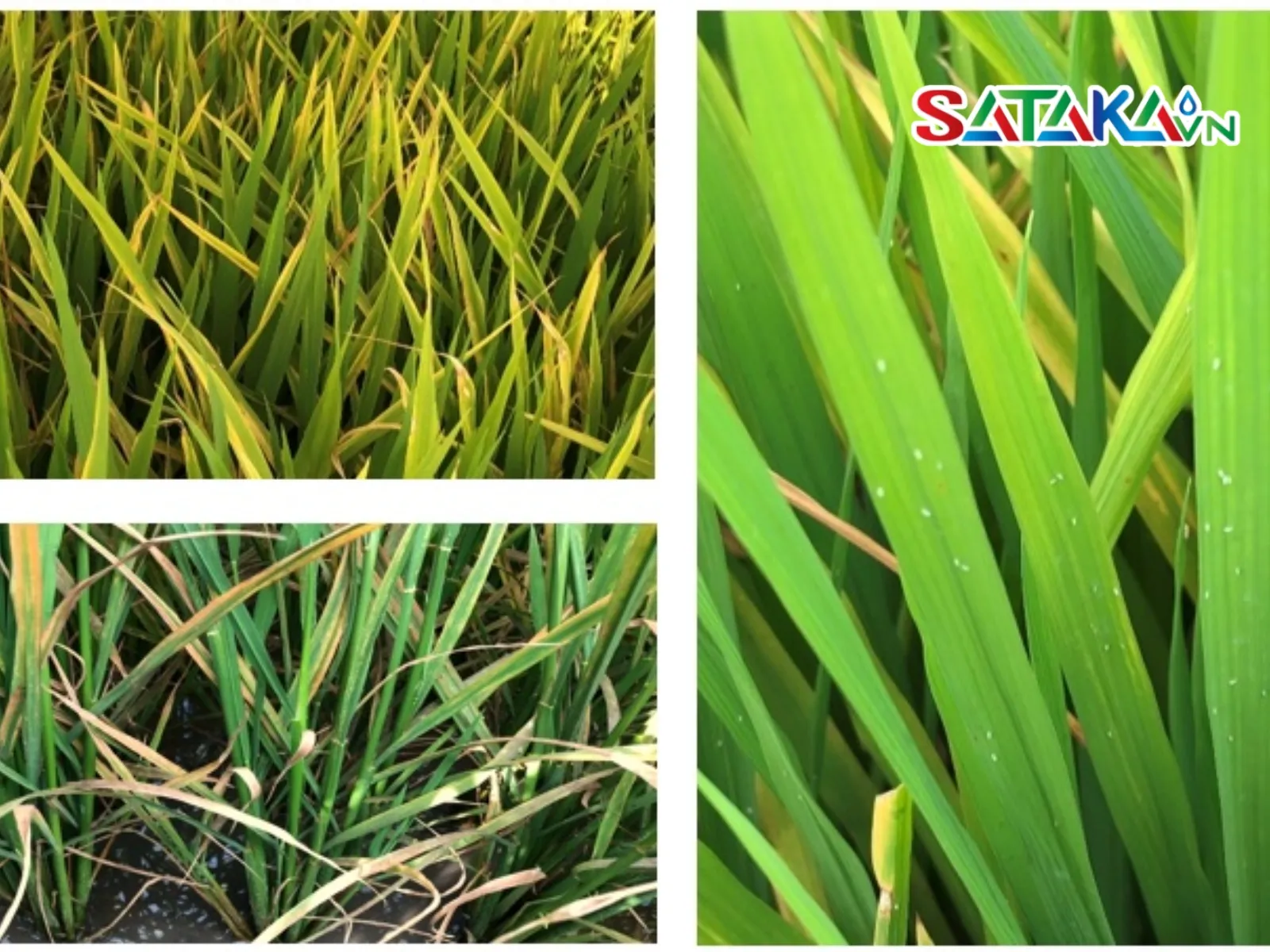
Characteristics of whiteflies that damage rice
In the early stages, first-instar nymphs are about 0.25 mm long with distinct legs and antennae but lack the characteristic white waxy coating. Second- and third-instar nymphs measure 0.6–1 mm, are usually immobile, and wingless. The final stage (pseudo-pupa) is approximately 1.2 mm long and features long white wax filaments.
The pest’s damaging activity lasts 7–10 days, with optimal growth at 30°C. White-backed planthoppers thrive in the dry season when conditions are hot and sunny. Adults lay eggs on the underside of rice leaves, covered by a waterproof waxy layer, which makes pest control more challenging. Their high reproductive rate, with egg hatchability up to 94%, contributes to their rapid population growth.
These pests are most active in the morning and mate in the afternoon. If mating does not occur, females produce male offspring parthenogenetically.
2. Damage Caused by White-Backed Planthoppers
The white-backed planthopper inflicts significant damage on rice crops, including:
- Direct Leaf Damage: They pierce and suck sap from rice leaves, leading to dehydration. This causes leaves to wilt, yellow, and lose photosynthetic capacity, negatively affecting the plant's overall growth.
- Reduced Yield: Infestation reduces harvestable yields. Their rapid reproduction, with egg hatchability reaching 94%, leads to a swift population increase, reducing panicle and grain formation.
- Disease Facilitation: Infested plants become weak, creating favorable conditions for fungal and bacterial infections such as blast disease and leaf blight, which can devastate entire crops.
- Increased Costs: Farmers must invest heavily in pesticides and other control measures, raising production costs and financial pressure, especially in competitive agricultural markets.
- Lower Grain Quality: Infested grains may be deformed, discolored, and fail to meet market standards, complicating their sale.
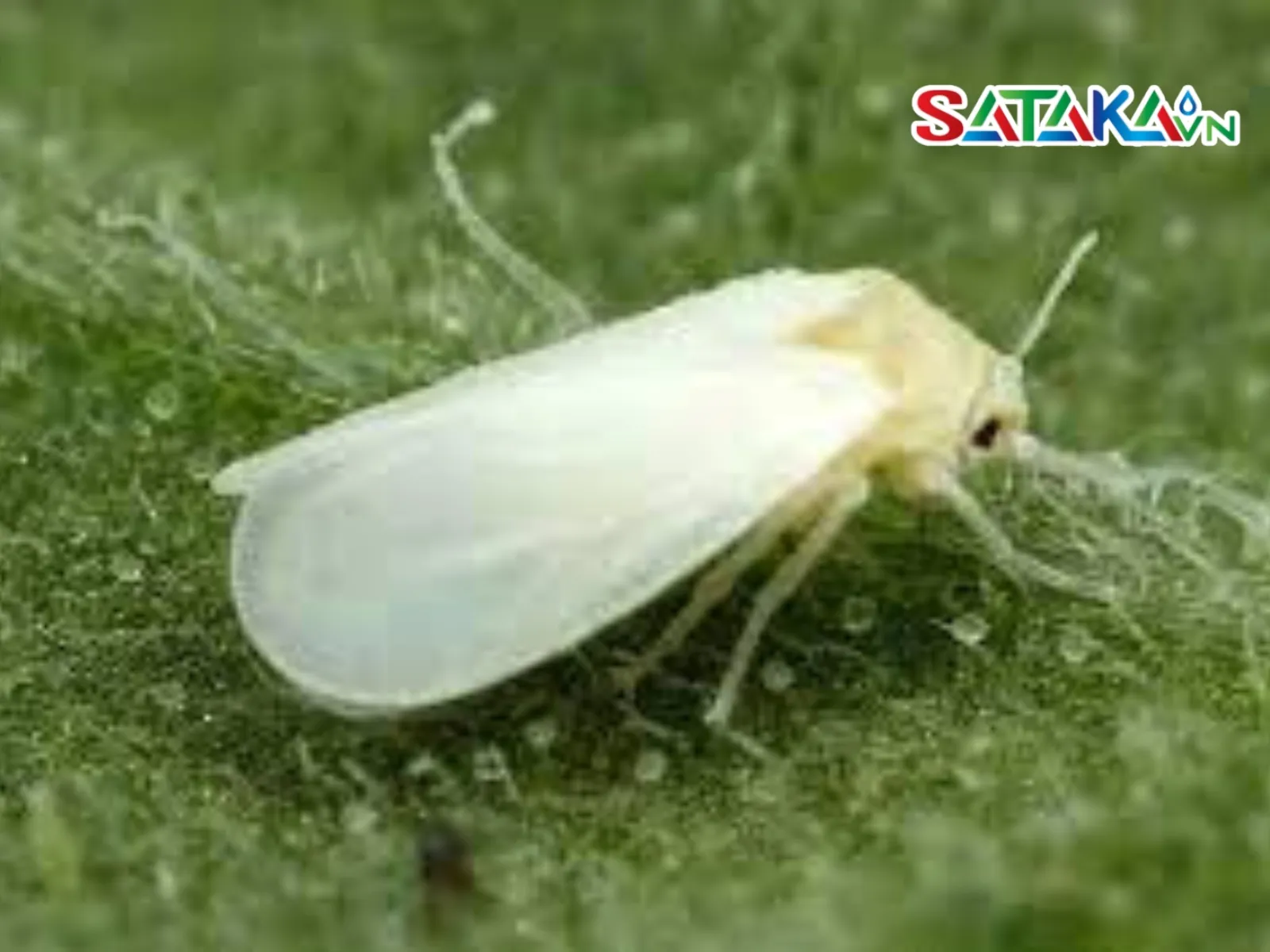
Harmful effects of whiteflies on rice
3. Causes of White-Backed Planthopper Infestations
White-backed planthoppers thrive under specific weather conditions, particularly during the dry season. Major causes of infestations include:
- Hot and Dry Conditions: High temperatures and low humidity create an ideal environment for reproduction and population growth.
- Drought or Water Stress: Weakened plants under drought conditions are more susceptible to sap-sucking pests.
- Rain and Storms: Heavy rains reduce pest populations by washing them off plants and improving rice plant resistance.
- Leaf Discoloration: Sap extraction leads to yellowing leaves, and in severe cases, plant death.
- Leaf Deformation: Infestations can twist rice leaves, resembling symptoms of yellow dwarf disease.
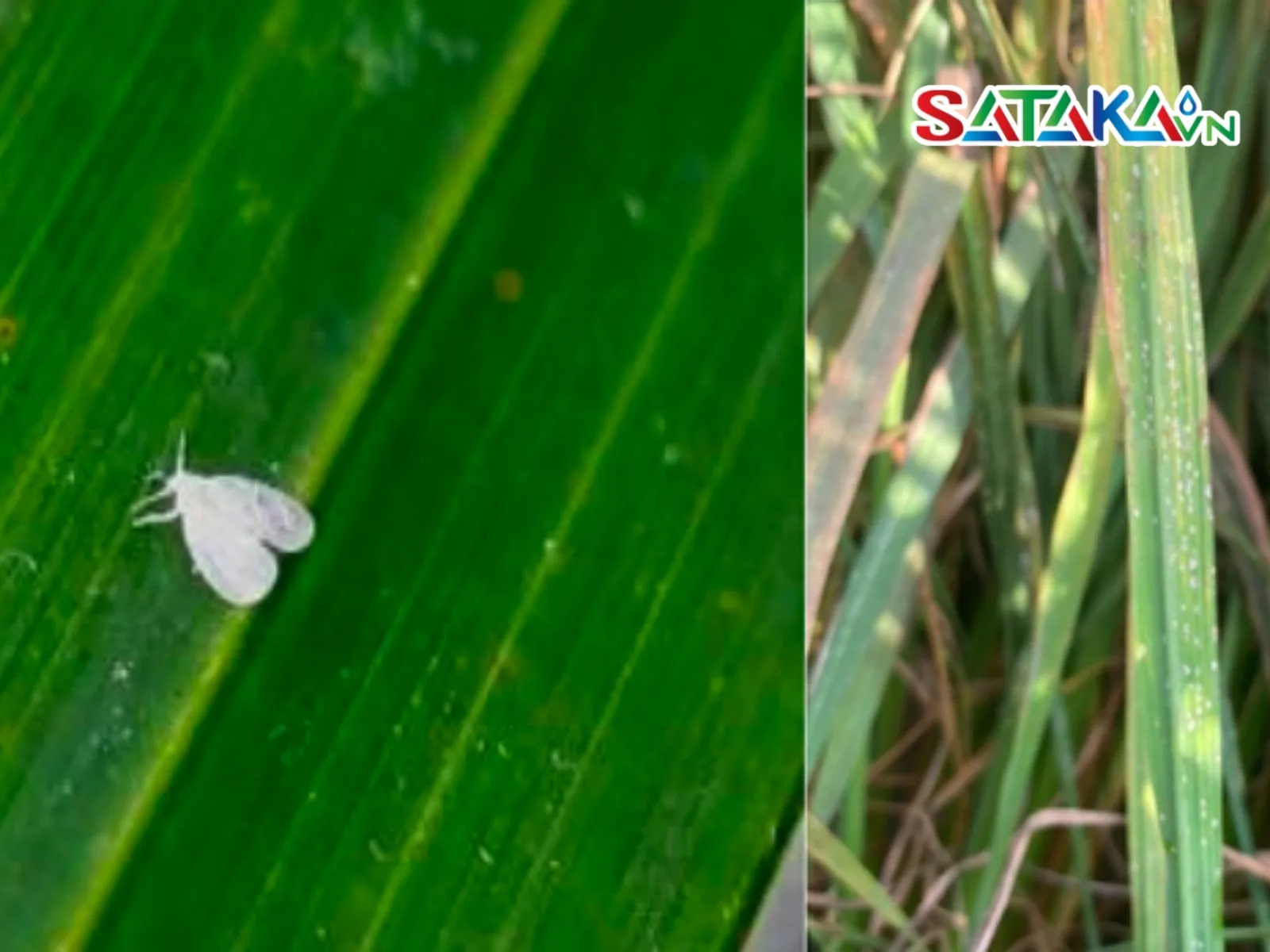
Causes of whiteflies
4. Effective Measures to Control White-Backed Planthoppers
To minimize damage from white-backed planthoppers, farmers should adopt proactive and integrated control measures:
4.1. Cultivation Practices
- Resistant Varieties: Select rice varieties less prone to planthopper infestation, with upright leaves. Synchronous planting and techniques like "3 Reductions, 3 Gains" or "1 Must, 5 Reductions" can reduce losses.
- Balanced Fertilization: Apply nitrogen, phosphorus, and potassium in balanced quantities. Avoid excessive nitrogen application. Use 100–120 kg of seeds per hectare for broadcasting or 70–80 kg for row planting.
- Regular Field Monitoring: Inspect fields frequently by shaking leaves to detect pests or using spider webs to identify trapped planthoppers.
- Conserving Natural Enemies: Protect beneficial insects like lacewings, ladybugs, and predatory bugs by avoiding pesticide application during the first 40 days after planting.
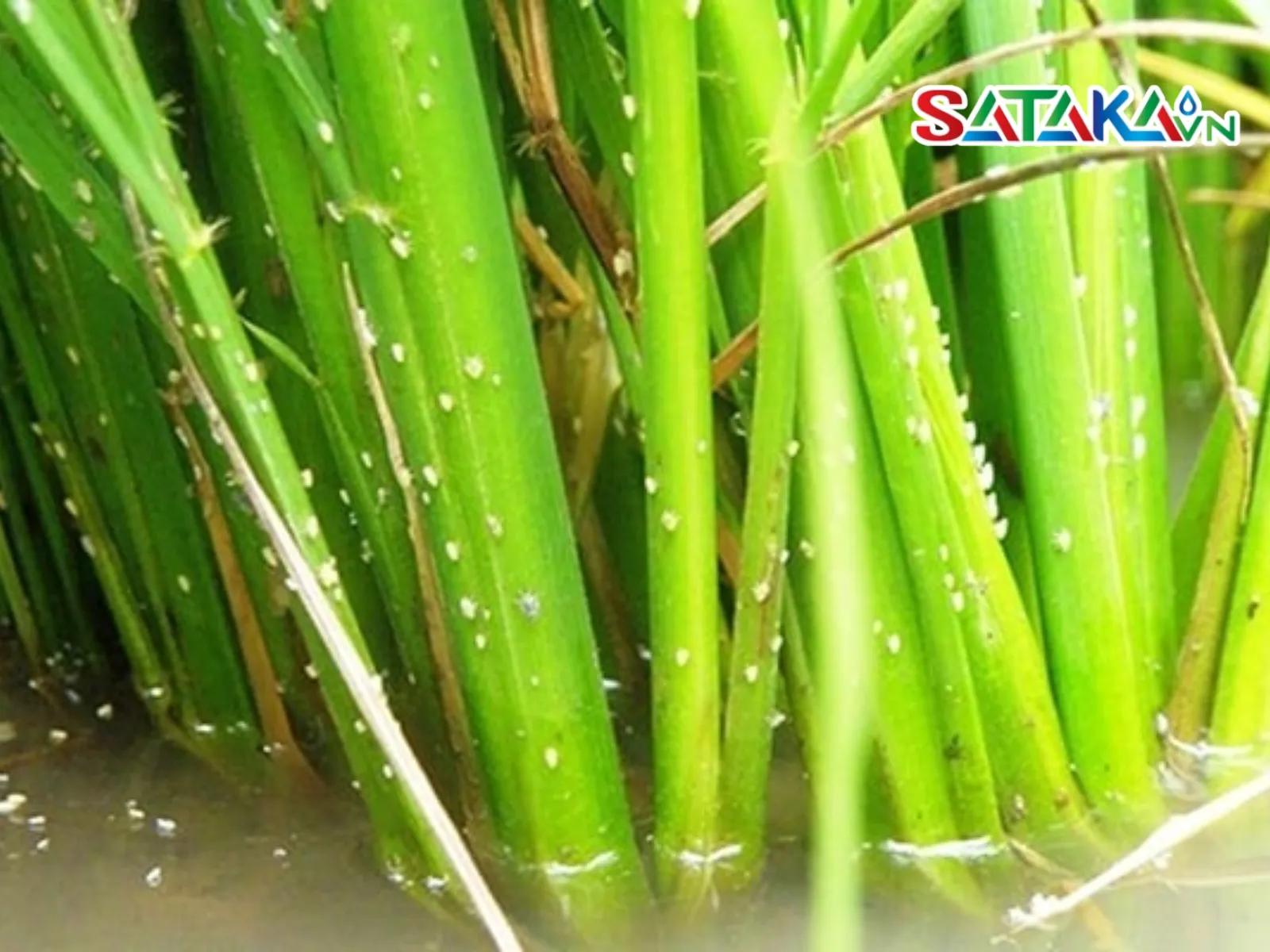
How to prevent whiteflies from damaging rice
4.2. Chemical Control
- Pesticide Use: Apply pesticides containing ingredients targeting planthoppers when their population exceeds 15–20 per tiller or five nymphs per leaf. Spray in the late afternoon and direct nozzles under the canopy to reach pests hiding on leaf undersides.
- Field Hygiene: Clean fields thoroughly before and after planting. Remove host plants like guava, vegetables, cassava, and pineapple to prevent pest sheltering.
5. Precautions When Using Pesticides
When using pesticides to control white-backed planthoppers, consider the following:
- Choose the Right Product: Use systemic, penetrative, and fumigant pesticides to overcome the waxy layer protecting the pests.
- Timing: Spray in the late afternoon when pests are active.
- Technique: Lower spray nozzles to target leaf undersides effectively.
- Follow the "Four Rights": Apply the right pesticide, at the right dosage, at the right time, and using the correct method for optimal results.
- Read Instructions Carefully: Understand dosage, preparation, and pre-harvest intervals.
- Protect Health and the Environment: Wear protective equipment such as masks, gloves, and goggles during spraying.
- Monitor Effectiveness: Check pest levels after application to evaluate pesticide effectiveness and adjust control strategies.
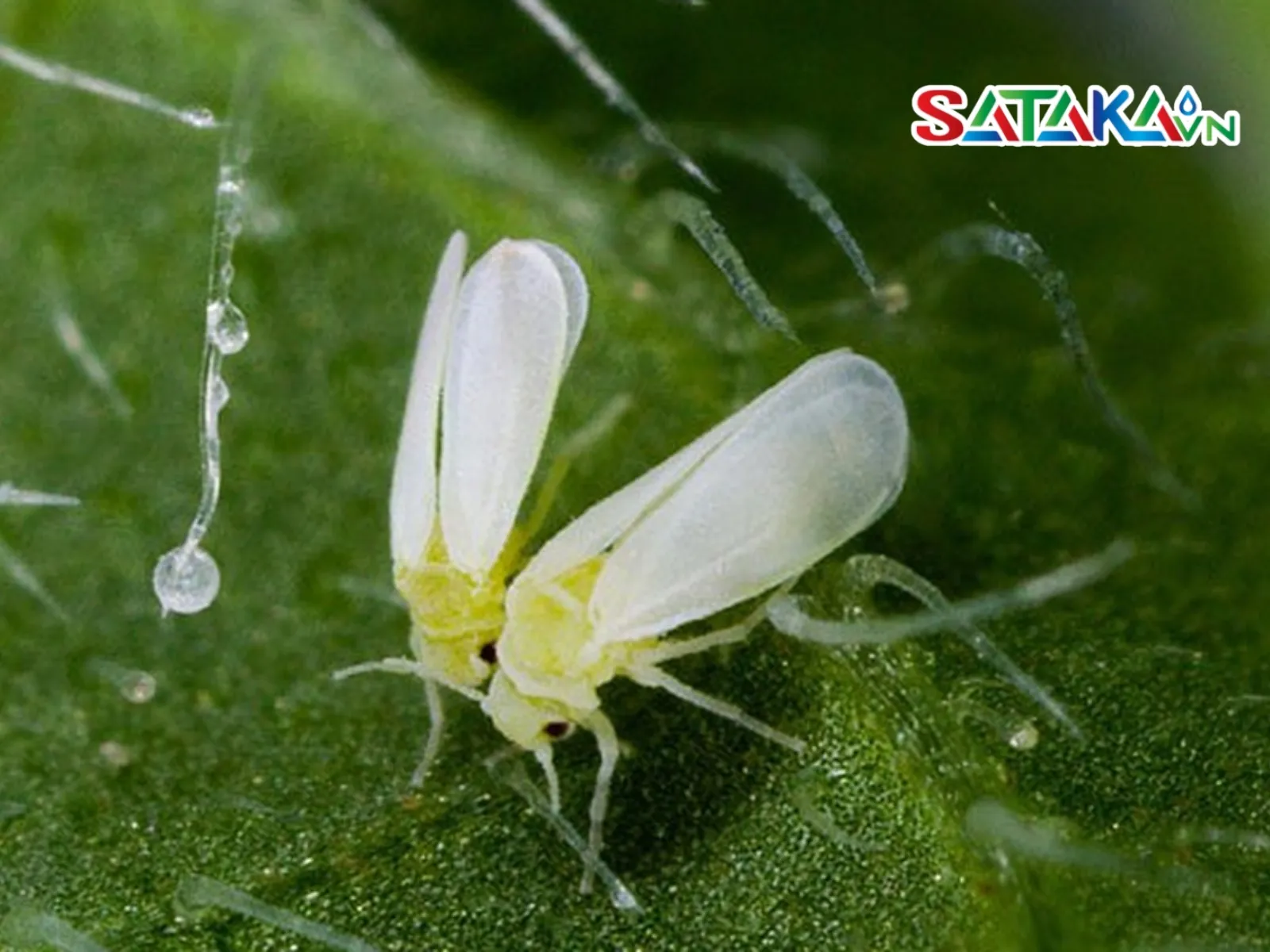
Be careful when using pesticides
6. Farmer Experience in Managing White-Backed Planthoppers
Experienced farmers offer valuable insights for managing white-backed planthoppers effectively. Key practices include:
- Sowing at the right time
- Choosing resistant rice varieties
- Regular field monitoring
- Adopting the "3 Reductions, 3 Gains" strategy
- Using biological control measures
- Maintaining field moisture
- Timely pesticide application
- Ensuring field hygiene
- Strengthening control measures
- Sharing knowledge within the farming community
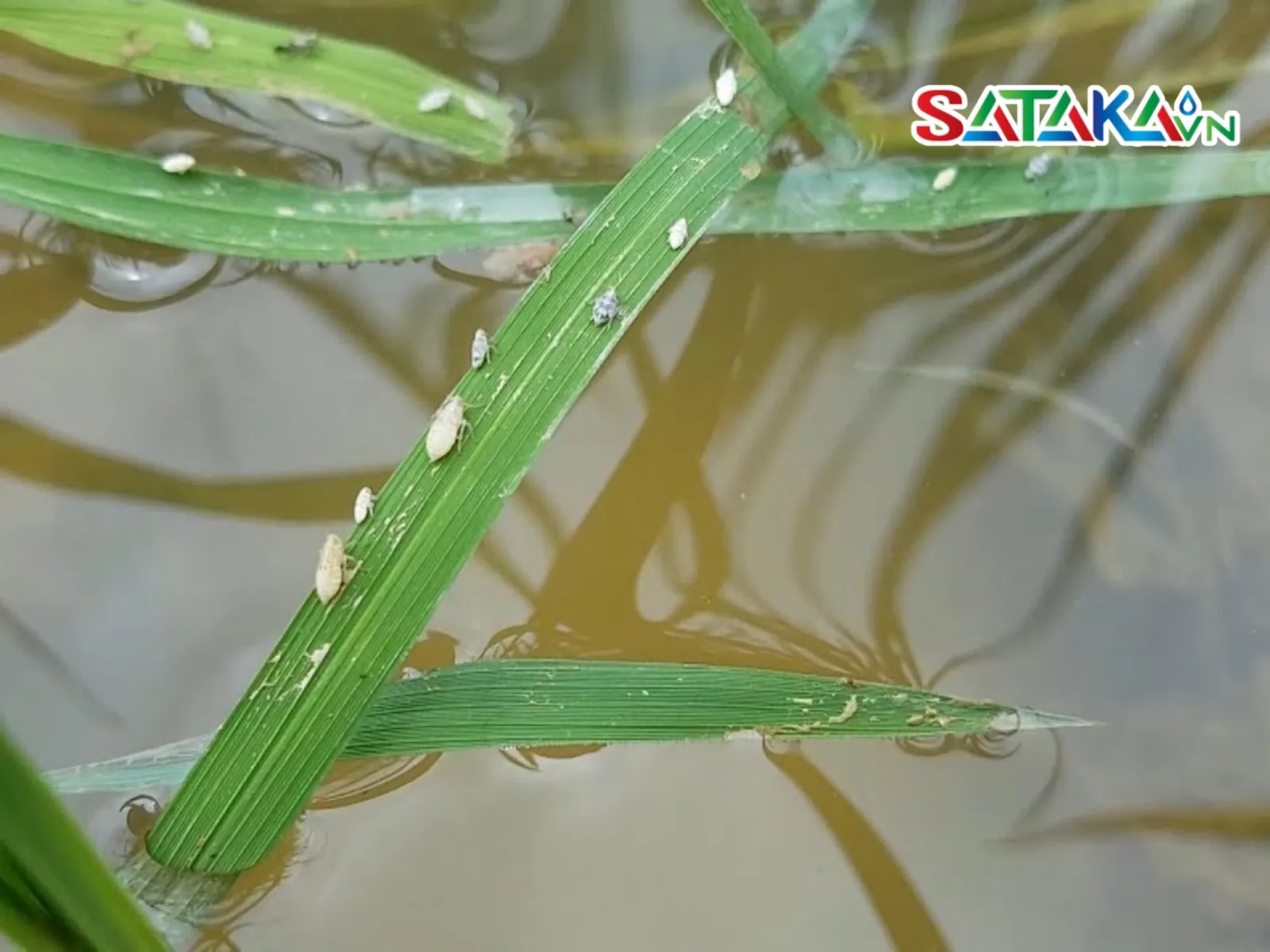
Experience in preventing rice whiteflies
Controlling white-backed planthoppers is a pressing issue. Collaboration between farmers and experts at Sataka can build a strong support network to combat this pest. Knowledge and experience in managing white-backed planthoppers are essential for achieving high-yield harvests.





